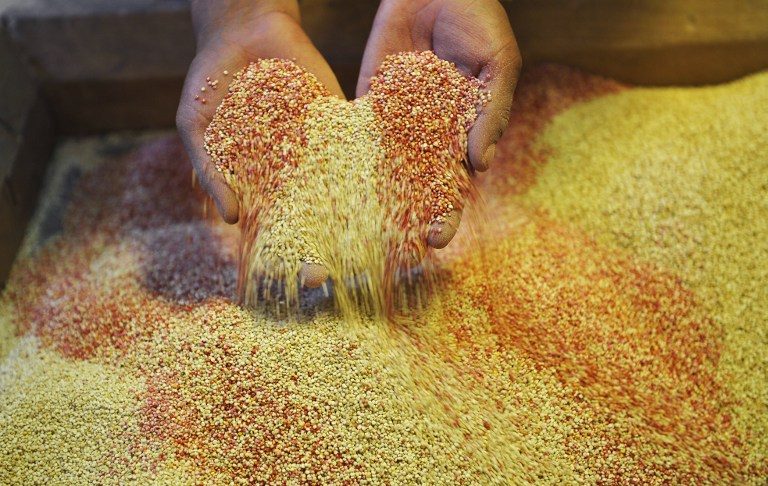SUMMARY
This is AI generated summarization, which may have errors. For context, always refer to the full article.

PARIS, France – Scientists on Wednesday, February 8, unveiled the near-complete genome of quinoa, a grain cultivated centuries ago by Incas in the Andes that scientists say could help feed a hungry world.
Best known outside its native region to health food fans in North America and Europe, quinoa is highly nutritious, gluten-free, and packed with essential amino acids, fiber, vitamins, and minerals, experts say.
It also scores lower than other crops on the glycemic index, a measure of how quickly foods raise blood sugar levels – a major concern for diabetics.
The grain thrives at any altitude up to 4,000 meters (13,000 feet) above sea level, in conditions that would leave most food plants struggling.
“Quinoa is incredibly resilient, and can grow in poor or salty soils,” said Mark Tester, a professor at King Abdullah University of Science and Technology in Saudi Arabia and leader of the consortium of scholars that decoded the plant’s genome.
“It could provide a healthy, nutritious food source for the world using land and water that currently cannot be used.”
And yet, global consumption remains incidental compared to wheat, rice, barley, or corn – less than 100,000 tons per year compared to hundreds of millions of tons for each of the other major grains and cereals.
“One problem with quinoa is that the plant naturally produces bitter-tasting seeds,” Tester explained.
The bitterness – a natural defense against birds and other pests – comes from chemical compounds called saponins.
The process for removing these chemicals is labor-intensive and costly, and requires ample use of water.
Another constraint is that quinoa plants tend to have small seed heads and long stalks that can collapse in strong wind or heavy rain.
“Despite its agronomic potential, quinoa is still an underutilized crop, with relatively few active breeding programs,” Tester and 3 dozen colleagues wrote in the journal Nature.
Bitter to sweet
First grown by humans thousands of years ago in the high plateau around Lake Titicaca in the Andes, quinoa is still barely domesticated, the researchers said.
Other major crop plants have been bred for centuries or, more recently, genetically modified to combine optimal traits to boost yield and bolster resistance to pests and climate change.
Now, scientists can delve into the quinoa genome as well.
“Quinoa has great potential to enhance global food security,” Tester said.
The fact that some strains grow well at temperatures up to 38 degrees Celsius (100 degrees Fahrenheit), also bodes well for regions hit hardest by global warming.
Tester’s team has already pinpointed genes, including one that controls the production of saponins, that could be altered – through breeding or gene editing – to enhance quality and yields.
“With this new knowledge of quinoa DNA, we can quickly and easily select plants that do not produce bitter substances in the breeding process,” said co-author Robert van Loo, a scientist at Wageningen University and Research Center in the Netherlands.
South American varieties could probably be made sweeter with a single gene change, he added.
Most quinoa is grown in 3 Andean countries: Peru, Ecuador, and Bolivia.
The United States and Canada account for nearly 70% of exports, followed by France, the Netherlands, and Germany.
The price of quinoa has nearly tripled in recent years due to increased demand.
If printed, the sequence of letters corresponding to the quinoa genome – comprised of 1.3 billion molecular building blocks – would take up 500,000 pages. – Rappler.com
Add a comment
How does this make you feel?
There are no comments yet. Add your comment to start the conversation.